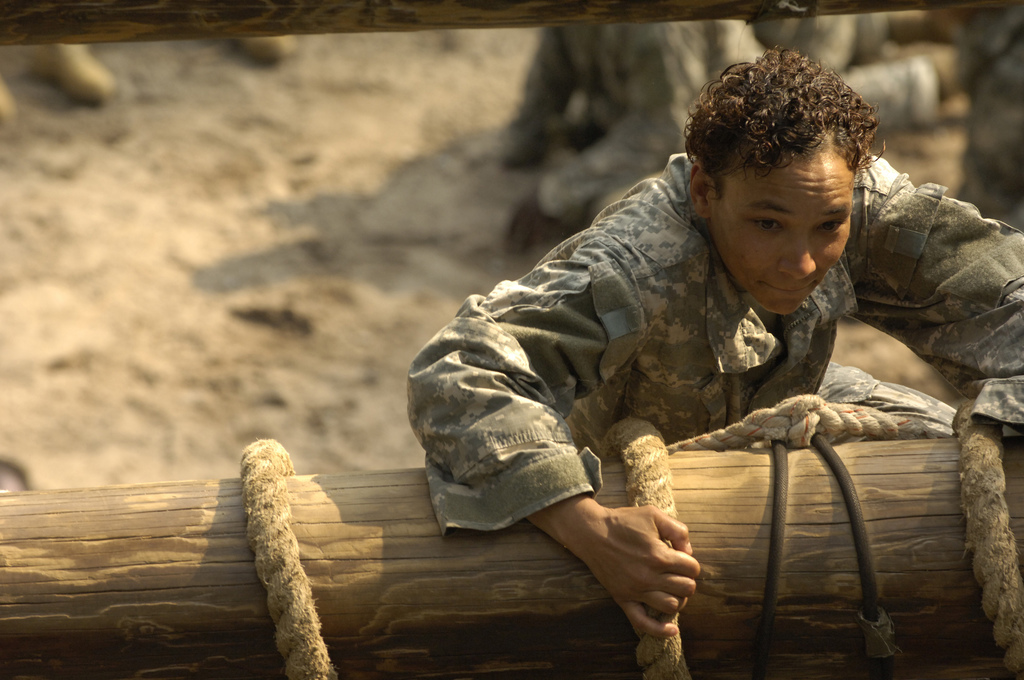Students from Dr. Jacqueline Angel’s LBJ School seminar “Women and the Changing World of Work,” address obstacles faced by women in the military in this series. To view more of the series, please click the “Women in the Military” tag below.
In all previous and current U.S. military conflicts, federal policy has not permitted the assignment of women to the vast majority of ground combat and risky noncombatant units. However, several major federal policy changes in the past forty years have drastically opened up roles for women to serve in the military. The implementation of an all volunteer force in 1970s; the 1994 amendment to the Department of Defense’s “Risk Rule,” which excluded women from only certain combat roles; and the January 2013 announcement by former Defense Secretary Leon Panetta to lift the ban on women in combat all led to increased female enlistment rates. Further examination of these enlistment rates, as well as women’s motivations for joining the military, reveals two interesting themes in enlistments among African American and Hispanic women.
Currently, the black population, specifically black females, is higher represented in the military than in the civilian sector. Some black women see the military as an equal opportunity employer due to the fact that black women typically earn less than black males and white females with the same level of education in the civilian labor force. Although, there is a disproportionate rate of black women in the military compared with the civilian sector, there has been a sharp decline in enlistment numbers over the past 10 years. Military analysts attribute this decline to the unpopularity of the Iraq War and cultural mistrust of the government. Also noted by military statistics and reports, the stigma of black soldiers being the first to combat lines during the Vietnam War has had a lingering effect on the black community.
The Hispanic population traditionally has been underrepresented in the military when compared to the U.S. population. However, in the past two decades, the enlistment rates for Hispanic men and women has more than doubled. As Lizette Alvarez, Miami Bureau Chief of the New York Times, wrote, the increased rate could be attributed to a multi-faceted recruiting campaign targeting Hispanic youth. As part of these recruitment efforts, the Army has placed ads in Spanish-language media, including magazines, radio and television and spent an increased amount of time in Hispanic communities targeting families and specifically mothers. Dr. Gina Perez, Associate Professor at Oberlin College and Dr. Caridad Souza, Associate Professor at Colorado State University, have suggested that Hispanic women see the military as a source of autonomy, noting there has been a push by Hispanic parents to enroll their daughters in the Junior ROTC. This rise in Hispanic service women could also be correlated with the perceived economic advantages of joining military service, such as learning skills transferable to the civilian work force (Segal, Thanner, Segal; 2007).
Federal policy has been a great driver for creating equal opportunities within the military. When job growth opportunities become available to women, women enlist at higher rates, creating more diversity and representation in the U.S. military. As Maj. Gen. Camille Nichols said at the recent CWGS Emerging Scholars conference, “If you have an army that does not reflect the population, the population will not stand up and support its army.” It is crucial that society continues to study and implement policies that facilitate equal opportunities for entering the military, serving in the armed forces, and re-entering civilian life so that our military will more accurately represent the people it serves.

